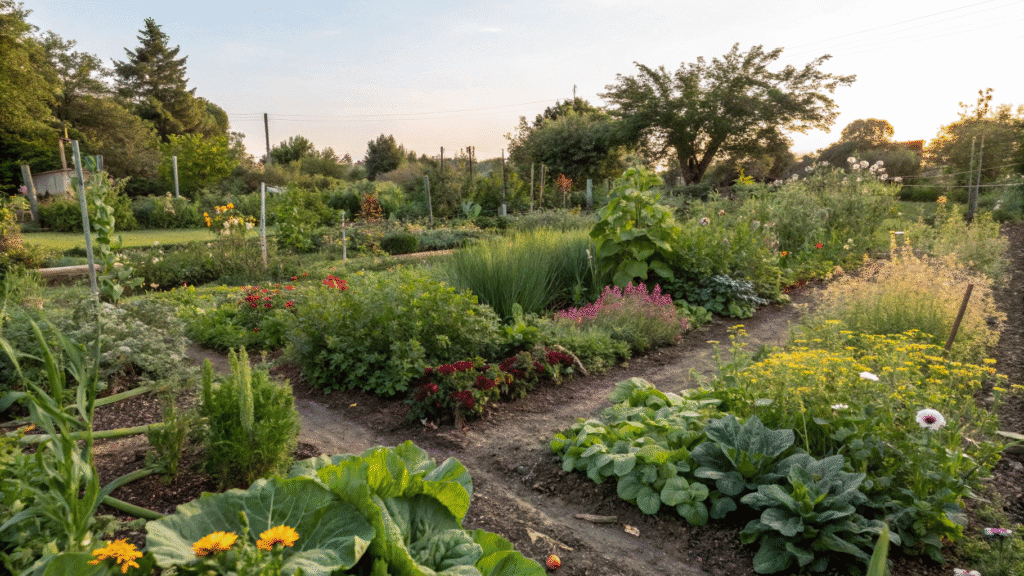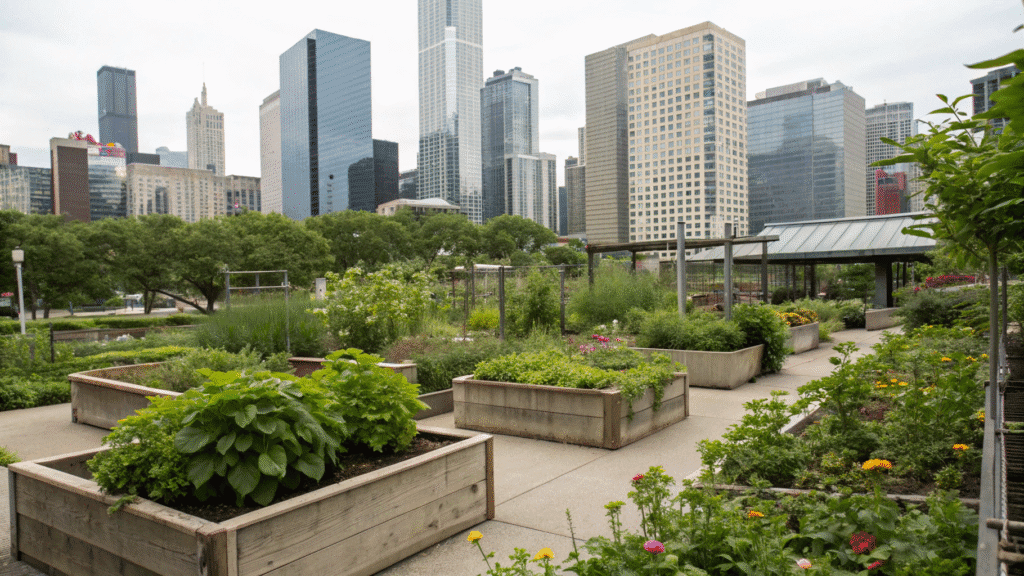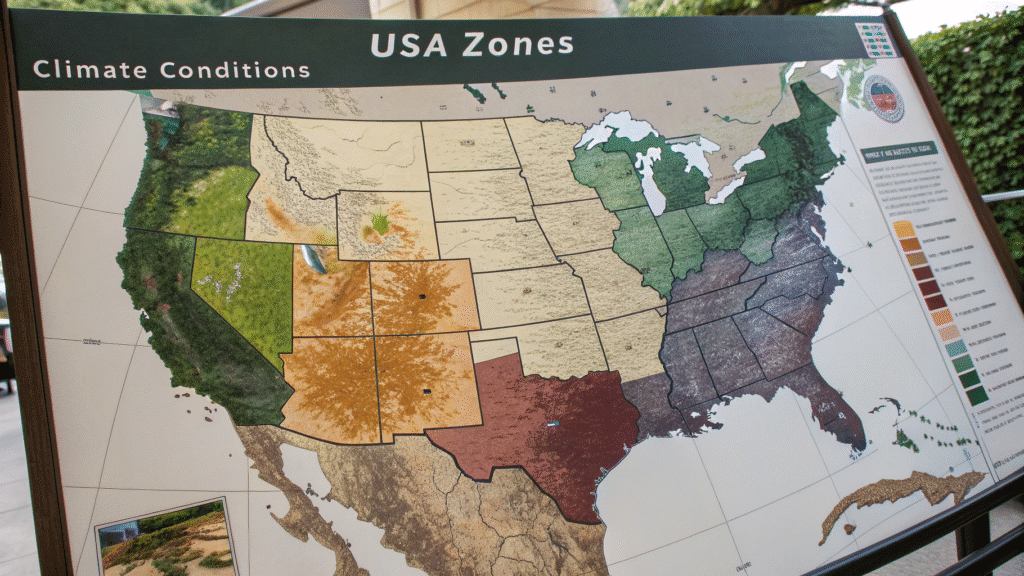Let’s face it—traditional gardening methods are broken. We till the soil until it’s lifeless, douse plants with chemicals, and wonder why our tomatoes taste like cardboard.
But there’s a better way.
Regenerative gardening flips the script by treating your garden as a living, breathing ecosystem.
Here’s the kicker: you don’t need a farm to make a difference. A 4’x4’ balcony or a tiny backyard patch can become a carbon-sequestering powerhouse. Ready to dig in?
Table of Contents
What is Regenerative Gardening? A Breakdown for Beginners
Regenerative gardening is a holistic system that prioritizes soil health, biodiversity, and closed-loop sustainability. Unlike conventional gardening, which often treats soil as a lifeless growing medium, regenerative practices focus on rebuilding ecosystems.

Think of it as a savings account for your garden: every compost pile, every native plant, and every avoided tiller pass “deposits” health into the land.
Bonus: Read my article “Make Stinging Nettle Fertilizer” so you can create one of the best natural fertilizers!
Key Differences from Conventional Gardening
| Aspect | Conventional Gardening | Regenerative Gardening |
|---|---|---|
| Soil Management | Tilling, synthetic fertilizers | No-till gardening methods, compost, mulch |
| Biodiversity | Monocrops, chemical pesticides | Polycultures, natural pest control |
| Water Use | High irrigation needs | Rainwater harvesting, swales |
| Carbon Impact | Releases CO2 through tilling | Sequesters carbon in soil |
The 5 Foundational Principles of Regenerative Gardening
1. Soil as a Living Ecosystem
Soil isn’t inert dirt—it’s a dynamic network of bacteria, fungi, protozoa, and earthworms. A single teaspoon of healthy soil contains more microorganisms than there are humans on Earth. These organisms:
- Break down organic matter into plant-available nutrients
- Create soil aggregates that improve water infiltration
- Suppress diseases through competitive exclusion
Action Steps:
- Composting: Layer kitchen scraps (vegetable peels, coffee grounds) with brown materials (dry leaves, shredded cardboard) in a 1:2 ratio. Turn weekly to aerate.
- Mycorrhizal Inoculants: Add fungi-rich supplements to help plants form nutrient-sharing networks.
- Avoid Chemicals: Synthetic fertilizers and pesticides disrupt microbial balance.
2. No-Till Gardening: Preserving Soil Structure
No-till gardening is the cornerstone of regenerative practices. Tilling destroys fungal networks, kills earthworms, and releases stored carbon. Instead, use these no-till gardening methods:
Method 1: Lasagna Gardening
- Base Layer: Cardboard or 10+ sheets of newspaper (smothers weeds, breaks down into carbon-rich material).
- Nitrogen Layer: 3 inches of compost, grass clippings, or manure.
- Carbon Layer: 6 inches of straw, leaves, or wood chips.
- Planting: Cut holes through layers for seedlings.
Bonus: Read my article “Make the Best Seed Starting Mix at Home” for seed starting diy.
Best For: Urban gardens, raised beds, or areas with compacted soil.
Method 2: Chop-and-Drop Mulching
After harvesting crops:
- Cut plants at soil level, leaving roots to decompose (feeds microbes).
- Chop foliage into small pieces and spread as mulch.
Best For: Perennial beds with plants like asparagus or rhubarb.
Method 3: Top-Dressing
- Annually add 1 inch of compost to garden beds.
- Let earthworms and rain incorporate nutrients naturally.
Pro Tip: For how to make no-till soil, mix 40% compost, 30% coconut coir, and 30% vermiculite for container gardens.
3. Plant Diversity: Nature’s Insurance Policy
Monocrops are a buffet for pests. Diverse plantings create resilience through:
- Pest Confusion: Mixed scents and colors deter insects.
- Beneficial Habitat: Flowers attract predator insects (e.g., ladybugs eat aphids).
- Nutrient Synergy: Deep-rooted plants mine minerals from subsoil, sharing them via fungal networks.
Proven Plant Combinations:
| Crop | Companions | Benefits |
|---|---|---|
| Tomatoes | Basil, Marigolds, Carrots | Improved flavor, nematode resistance |
| Zucchini | Nasturtiums, Dill | Aphid control, pollination boost |
| Fruit Trees | Comfrey, Clover | Nutrient accumulation, weed suppression |
Science Spotlight: A University of California study found diverse gardens require 58% fewer pesticides than monocultures.
4. Water Stewardship: From Scarcity to Abundance
Regenerative gardens mimic natural water cycles through:
- Rainwater Harvesting: A 1,000 sq. ft. roof yields 600 gallons of water from 1 inch of rain.
- Swales: Contour trenches slow runoff, allowing water to infiltrate soil.
- Ollas: Buried clay pots provide slow-release irrigation, reducing water use by 70%.
Urban Adaptation: Use repurposed soda bottles as drip irrigators for balcony gardens.
5. Wildlife Partnerships: Building a Balanced Ecosystem
Regenerative gardens don’t just grow plants—they cultivate relationships:
- Pollinator Support: 75% of food crops rely on pollinators. Plant native flowers like milkweed and goldenrod.
- Bird Habitat: Install nesting boxes for insect-eating species like bluebirds.
- Soil Life: Leave leaf litter and logs to shelter beetles and fungi.
Case Study: A suburban gardener in Texas increased tomato yields by 40% after adding a native wildflower border that attracted bumblebees.
Urban Regenerative Gardening: Transforming Concrete Jungles

City dwellers face unique challenges—compacted soil, limited space, and heat islands. Here’s how to overcome them:
Vertical Gardening Systems
| Method | Materials | Best Plants |
|---|---|---|
| Pallet Gardens | Pallets + landscape fabric | Strawberries, herbs |
| Gutter Planters | Recycled gutters | Lettuce, radishes |
| Shoe Organizers | Hanging fabric pockets | Microgreens, thyme |
Water-Saving Tip: Use air-conditioner condensation—a typical window unit produces 2 gallons daily—to irrigate plants.
Small-Space Composting
- Bokashi Fermentation: Ferment food scraps in airtight bins with bran inoculant. Bury fermented waste under mulch for odor-free decomposition.
- Worm Towers: Bury PVC pipes filled with compostable scraps. Worms come and go, enriching soil without bins.
Bonus: Top 5 Home Compost Machines – Most Popular Ones
Community Collaboration
- Tool Libraries: Share expensive items like broadforks or soil test kits.
- Seed Swaps: Exchange heirloom varieties adapted to local conditions.
- Compost Cooperatives: Pool organic waste for large-scale composting.
Example: The Philadelphia Urban Creators transformed a vacant lot into a 2.5-acre farm using these methods, now supplying fresh produce to 200+ families weekly.
Seasonal Strategies: A Month-by-Month Guide for Every Zone

Zones 3-5 (Cold Climates: MN, ME, Northern NY)
Spring (April-May):
- Soil Prep: Uncover overwintered beds. Top-dress with composted manure (rabbit or chicken).
- Planting: Start cold-hardy crops (kale, peas, radishes) under milk jug cloches.
Fall (Sept-Oct):
- Soil Protection: Plant winter rye—its roots prevent erosion and scavenge nutrients.
Zones 6-7 (Temperate Climates: PA, VA, MO)
Summer (June-Aug):
- Water Management: Mulch paths with grass clippings. Install ollas for drought-resistant irrigation.
Zones 8-10 (Warm Climates: TX, FL, SoCal)
Year-Round Tips:
- Heat Mitigation: Plant okra and sweet potatoes—they thrive above 90°F. Use 40% shade cloth for leafy greens.
Troubleshooting: Solving Common Regenerative Challenges
| Problem | Solution |
|---|---|
| Slugs in no-till beds | Beer traps in jar lids; crushed eggshell barriers. |
| Compacted soil | Plant daikon radishes; apply fungal compost. |
| Neighbor complaints | Plant edible borders (blueberries, nasturtiums). |
Your First Year: A Step-by-Step Roadmap
| Month | Tasks |
|---|---|
| 1-3 | Test soil; start compost; sheet mulch a bed. |
| 4-6 | Plant cover crops; install rain barrel. |
| 7-9 | Observe pests; top-dress with compost. |
| 10-12 | Plan crop rotations; join a seed swap. |
Conclusion: Growing Hope in Uncertain Times
Regenerative gardening isn’t just a hobby—it’s an act of defiance against ecological collapse. Every untilled bed, every native flower, and every compost pile heals the Earth. Start small, share your journey, and watch your garden transform into a sanctuary for life.
Your Next Steps:
- Convert one square foot this week.
- Visit a local urban garden center for organic seeds.
- Share your story in the comments below.
Thank you for staying with me until the end. Happy gardening!


Leave a Reply